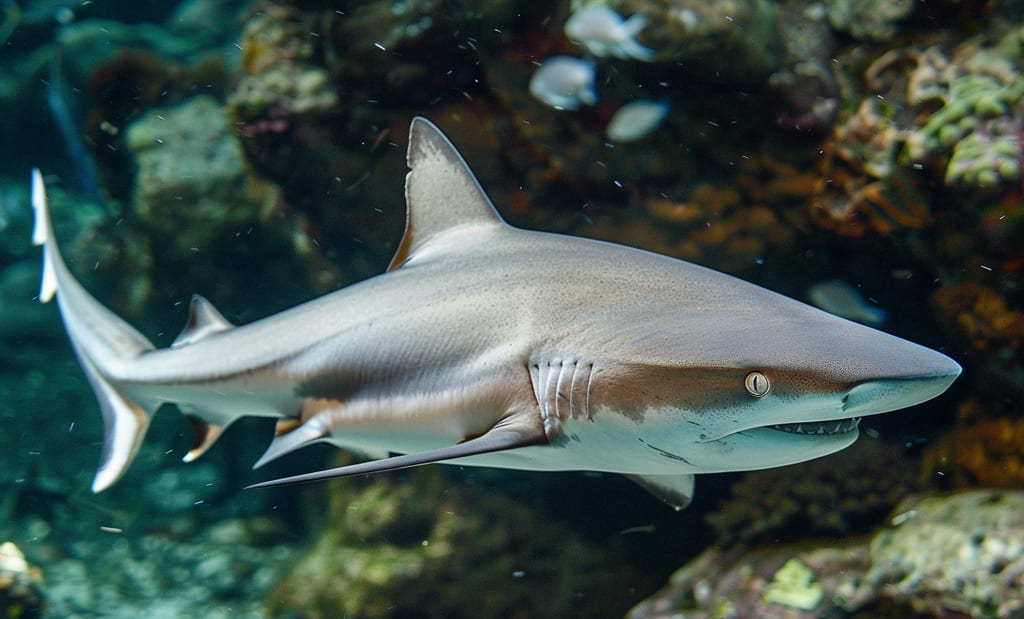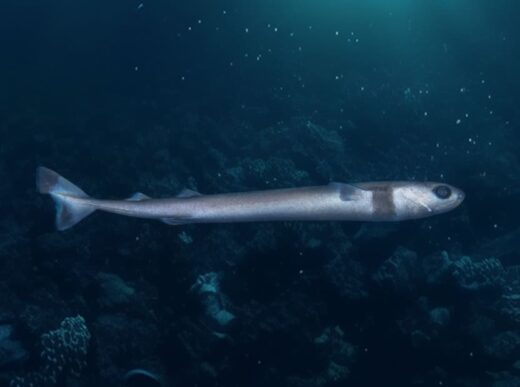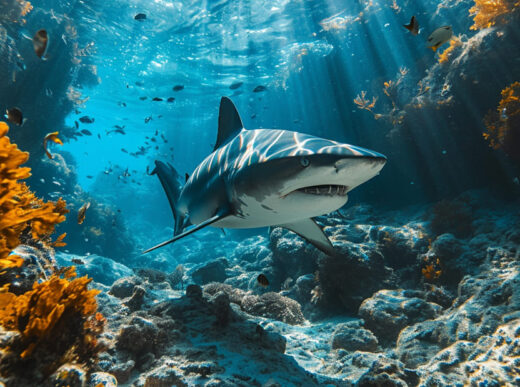Take a plunge into the ocean depths with us, and let’s explore the fascinating world of the Galapagos shark! This incredible and speedy predator has a knack for hanging out near islands. We’ve rounded up 20 cool and fascinating facts that will give you a fresh perspective on Galapagos sharks. Come along on this underwater journey as we unravel the mysteries of these mesmerizing ocean wanderers!
20 Amazing Facts About Galapagos Sharks
Strap in for an exhilarating journey through the mysterious waters where sharks reign supreme. Join me as we unravel the mysteries and dive headfirst into the captivating world of their incredible features!
Characteristics
1. Believe it or not, the Galapagos shark is a true globetrotter! It’s not limited to the islands of the same name; you can spot it anywhere in the world. The name, however, was coined when scientists first described it in the Galapagos.
2. Now, in the language of fish enthusiasts, this shark goes by the name Carcharhinus galapagensis. Breaking it down, the first part indicates it’s part of the grey shark family, and the second part gives a nod to its favorite hangout spot.
3. Hold onto your fins for this one – the Galapagos shark isn’t messing around in the size department. It’s one of the largest in the grey shark clan, reaching lengths of up to 3 meters and tipping the scales at a solid 80 kilograms.
4. Unless you’re a shark scientist with a keen eye, telling the Galapagos shark apart from its dark-furred cousin might be a challenge. Their main distinction lies in the dorsal fin – the Galapagos shark rocks a higher one with a rounded edge.
5. Picture your typical shark physique – a streamlined, spindle-shaped body for top-notch speed, a blunt snout, and a mouth hanging out underneath – that’s the Galapagos shark.
6. Don’t let those puppy-dog eyes fool you – the Galapagos shark’s mouth is armed to the teeth. It’s filled with sharp triangular teeth, neatly arranged in 14 rows on both upper and lower jaws. Dental hygiene is no joke for this ocean predator!
Habitats
7. Here’s a quirky twist – the Galápagos Islands aren’t the only hotspot for these sharks. They’re not picky about geography; you can spot them in the Pacific, Atlantic, and Indian Oceans, making them true oceanic wanderers.
8. Talk about exclusivity – the Galapagos shark isn’t one to mingle with the continental crowd. It’s got a thing for oceanic islands, making guest appearances in places like the Caribbean, Madagascar, Bermuda, Hawaii, and more. It’s like the jet-setter of the shark world, preferring those island vibes!
Lifestyle
9. Here’s a bit of a naming mystery – even though the Galapagos shark is often labeled as a reef shark, it’s not strictly bound to coral domains. This predator, surprisingly, finds its sweet spot in shallow waters, rarely taking the plunge into the deep unknown. It’s like it prefers the coastal VIP section!
Eating Habits
10. For the food enthusiasts out there, let’s talk about the Galapagos shark’s menu. It’s quite the diverse feast, featuring bony fish like perch, eel, flounder, mackerel, and more. And if that’s not enough, they also indulge in a bit of mollusk munching.
11. Hold on to your surfboards – the Galapagos shark has a serious appetite! It’s not just sticking to the basics; it goes big, attacking seals, sea lions, and even iguanas. And here’s the surprising part – when you peek into their bellies, it’s not just a seafood feast. You might find a mix of stones, corals, and algae – talk about a diverse palate!
Intelligence and Social Behavior
12. Here’s a key tidbit about these sharks – they’re the lone wolves of the ocean. While they don’t team up in packs, they can create quite the crowd. Take the São Paulo Islands off the coast of Brazil, for instance – you’ll find a bustling congregation of Galapagos sharks, proving that even solo stars enjoy a good get-together!
Reproduction
13. Time for a peek into the family album – the Galapagos shark is all about that egg life. The little ones hatch from eggs right there in the womb, making a grand entrance into the ocean fully formed and measuring in at a neat 60–80 centimeters.
14. Here’s a little celebration for nature enthusiasts – the Galapagos shark knows how to throw a party. Unlike most of its grey shark relatives, it’s incredibly fertile. In a single litter, you might find yourself surrounded by up to 16 baby sharks – talk about a lively family gathering!
15. Hold on to your fins for this one – when a Galapagos shark mama is expecting, she’s not holding back. There’s a remarkable case where a pregnant female tipped the scales at a whopping 195 kilograms. That’s some serious weightlifting for the ocean’s expecting moms!
Population
16. Here’s a twist – the Galapagos sharks are holding their own in the population game. They’re not on the brink of extinction, and their numbers are quite significant. However, scientists, ever the cautious observers, have tagged them as a vulnerable species. It’s like they’ve got a steady pace, but we’re keeping an eye on them just to be sure!
Danger To Humans
17. A word of caution – taking a dip in waters where Galapagos sharks roam can be risky business! There have been documented cases of these sharks taking a not-so-friendly interest in careless swimmers, leading to tragic outcomes.
18. Prepare for a curious encounter – the Galapagos shark isn’t one to shy away from the spotlight. It often plays the curious card, showing interest in divers and fishermen. Hand movements seem to be particularly intriguing, and if you happen to shoo the shark away, don’t be surprised if it makes a fashionable comeback – and it might even bring a friend along for the rendezvous!
Are There Any Aquariums with Galapagos Sharks?
19. Ready for some good news? You can catch a glimpse of the Galapagos shark in its natural habitat. But, here’s the catch – when diving, it’s metal cages to the rescue! These cages act as a safety barrier, ensuring that sharks keep their distance from curious human observers.
20. Now for a bit of a downer – the bad news is that almost nowhere in the world will you find Galapagos sharks in oceanariums. The exact reasons for this remain a bit murky. It could be their high level of aggressiveness or their apparent inability to play nice with sharks of other species. It’s like they prefer the open seas to the confined spaces of aquarium life!




